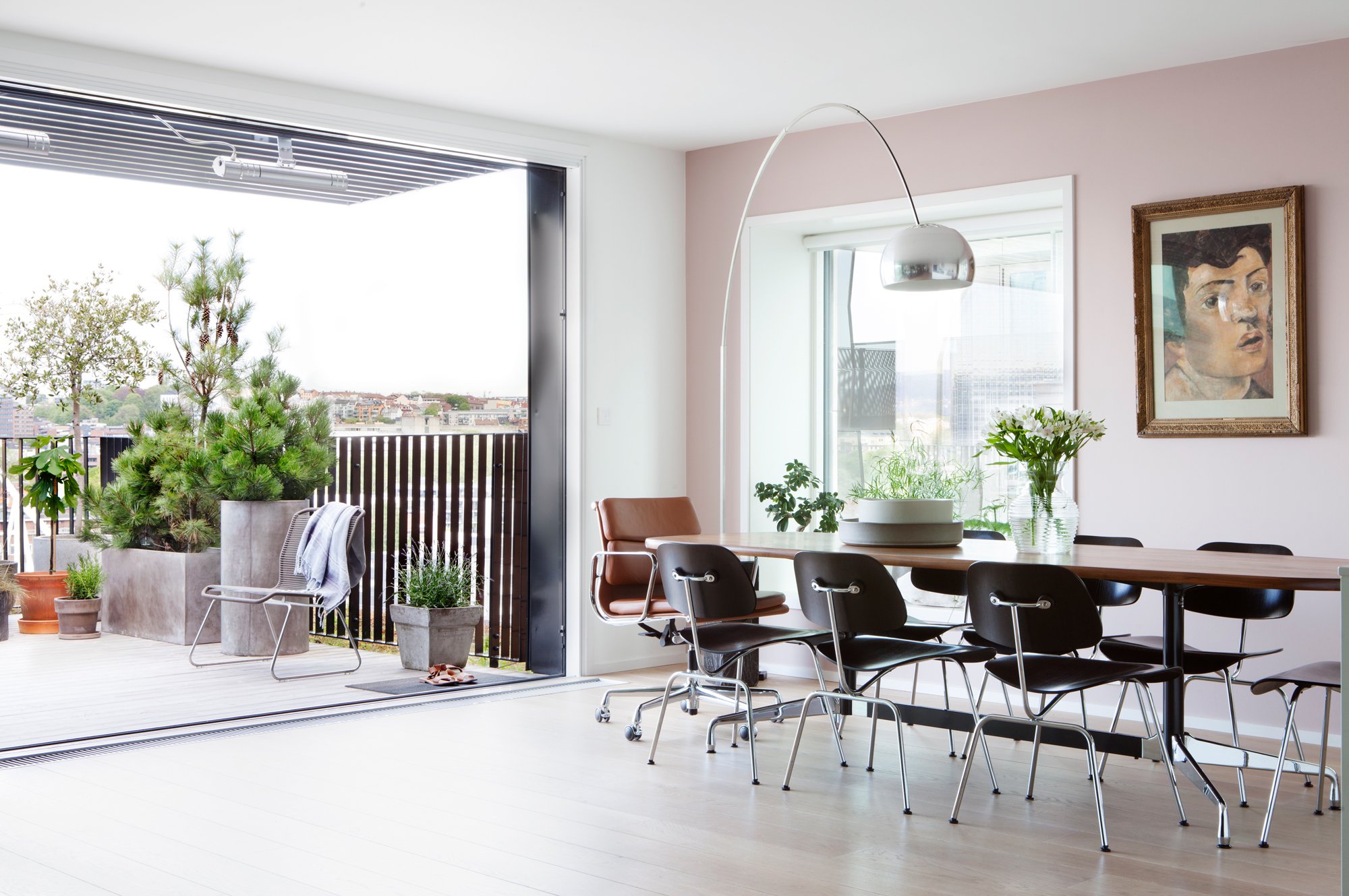
The Carve
How to create iconic architecture?
TYPE OF PROJECT: Residential/office
LOCATION: Bjørvika, Oslo
CLIENT: Oslo S Utvikling
COLLABORATORS: Landscape/interior: Lala and Zinc
SIZE: 22 000 m2
TIMEFRAME: (built 2011–2014)
PROJECT STATUS: Completed
With a façade cladding of hand drawn marble slabs, a dramatic schism between the office and the residential section and a top floor worthy of Bruce Wayne a.k.a. Batman, the Carve may be viewed as a spectacular architectonic experiment.
Barcode emerged as the new neighborhood where international companies yearned to establish themselves. DNB checked in to three of the 13 buildings in the Barcode row, where 16 000 square meters worth of office space, 6000 square meters worth of apartments and a ground floor designed for around the clock activity were to be carefully distributed. In order to guarantee the quality A-lab, MRDV and DARK had accommodated for in the master planning of the site, the three architect’s firms were given the task of designing one DNB building each. After a collaborative effort to establish a cohesiveness between the three buildings, each firm pushed on to create their own individual look.
«Why did they spend 300 years building a cathedral? What did they have that we don’t? They had time,» founder and partner of A-lab Geir Haaversen remarks rhetorically to describe the point of departure for the design of the Carve.
In this day and age, the building process has become so compressed that there is no time to spare. But what if this process could actually take as long as it required? The Carve was the last of the three DNB buildings to be completed, and jumping the gun gave an unusual amount of available time.
Façade
There was no doubt that risks were huge when the drawing of each individual marble slab, which were then chiseled out in the quarry in Levantina in Spain, began. A planning of a grandeur no one knew if the client would agree to, or even be approved, commenced. Each single slab, each single corner and each single seam has been calculated by an A-lab architect. It took three full-time equivalents to draw the total of 10 000 slabs that now cover the facade.
The material choices in the structure can be seen as a body analogy, where the steel frame is the skeleton, the interior wooden facades constitute the body’s muscle mass and the white Blanco Macael marble façade is the top layer of skin.
“The crucial element here was to do it ourselves. To really feel our calling as architects and how far you can actually push the limits within this profession. Is it possibly to build this kind of stone architecture, and what will it cost in terms of time? In hindsight, everybody will say it was worth it, but in the middle of the process it was madness”
CEO and founding partner, Geir Haaversen
Office and housing
In the office spaces, focus have been put on flexible solutions that optimize the view and the possible applications. The floors are interconnected in pairs of three with open staircases so that easy circulation ensures good internal communication. The floor plan is designed for a great variety of open landscape offices and smaller office cells.
The Carve’s footprints was limited to 21 times 105 meters, rising 15 stories up. Since the building itself was designed as an office, where as many as eight of the floors where dedicated to DNB employees, it was important to shield the apartments on the top floors. To create a division between the residential and the office sections, the building was designed with a hole right through it. The result was a completely wild 900 square meter big and four stories high roof garden.
The 6000 square meters of apartment space start on the ninth floor and stretch seven stories up from the roof garden. Instead of putting balconies outside of each apartment, they were placed within the body of the building in order to give each of the 41 apartments a separate roof terrace. In addition, the hole through the building made space for the design of perhaps two of the coolest two-room apartments in Oslo, in which you can sit in your sofa and behold a skyline could just as well be in Singapore as in Oslo.
Photo: Inger Marie Grini
«On the top floor we wanted a Bruce Wayne kind of apartment with a 360 degree view of the city. It has one terrace on each side, and the elevator goes straight up to the apartment. Nobody knows who lives there. There is a mystery surrounding it. Maybe they have a plane going to and from it,» Geir’s subtly offers.
Photo: Inger Marie Grini
Photo: Inger Marie Grini
Photo: Inger Marie Grini
Photo: Inger Marie Grini
Barcode
When The Wedge, the conclusion of the Barcode row, was completed in 2017, it was instantly applauded. Aerial photos revealed how the high-rises drew lines resembling an electronic barcode. Each building was different from the next — as a vibration of modern architecture. Its location in the heart of the harbor, where shapes and materials are reflected in the sea, made this high-rise row a symbol of a city in growth.















